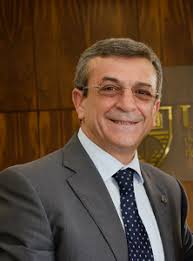Events
Institute of Bioengineering Research Seminar

Professor Gino Ambrosio
| Date: | Wednesday 7 April 2021 15:00 - 16:00 |
| Location: | MS Teams - link is below |
Research Seminar Gino Ambrosio, University of Naples Federico II, Italy
Abstract:
The implementation of a personalised therapy together a less invasive surgery for the restoration of human tissues is becoming an appropriate strategy to mitigate costs of the modern health care system and the maintenance of health and quality of life.
The current challenge is to design material at the site of surgery with specific behaviours for mimicking the natural structures and delivering appropriate signals to cells promoting tissue repair/regeneration.
Selection of a suitable injectable is often based on material characteristics (including mechanical properties, drug release kinetics and degradation) that serve for the specific treatment function. Micro or nano-structured materials in the form of gels, nanoparticles, nano-fibres and nano-composites have gained increasing interest in regenerative medicine because they are able to mimic the physical features of natural extracellular matrix (ECM) at the sub-micro and nano-scale levels.
By a careful selection of materials and processing conditions it is possible to finely control characteristic shapes and sizes from micro to sub-micrometric scale and to incorporate bioactive molecules such as proteins or growth factor to develop active platforms to support the repair/regeneration of different tissues.
It has been shown that the use of minimally invasive approach such as for bone cement to treat vertebral fracture has significant clinical potential. To achieve the ideal properties of bone filler efforts have been paid to optimize injectable calcium phosphate cements (CPC) which have been recognized as excellent alloplastic material for osseous augmentation/regeneration. The sol-gel synthesis approach appears to be the most suitable route towards performing injectable CPC. Furthermore, injectable hybrid material based on graphene oxide nanosheets and hydroxyapatite prepared by sol-gel approach is described. The presence of GO increases the bioactive and osteogenic properties of materials [1,2]. Within the class of 2D materials, exfoliated black Phosphorus is investigated to evaluate proliferation and the osteogenic differentiation of human pre-osteoblast cells (HOb) and mesenchymal stem (hMSC) cells. In vitro analysis demonstrated that 2D bP induced the proliferation and the osteogenic differentiation of human pre-osteoblast cells (HOb) and mesenchymal stem (hMSC) cells while inhibited the metabolic activity of osteosarcoma cells (SAOS-2) [3].
One more approach is based on the use of antimicrobial injectable materials [4]. It has been demonstrated that some imidazolium, pyridinium and quaternary ammonium ionic liquids (IL) have antimicrobial activity against some different clinically significant bacterial and fungal pathogens. Here, several systems based on IL at different alkyl-chain length incorporated in Hydroxyapatite (HA) through the sol-gel process to obtain an injectable material with simultaneous osteinductive and antimicrobial behaviours.
Furthermore, as example of technology transfer activity, cellulose superabsorbent hydrogels are discussed as material intended to allow safe and effective weight loss and improvement of glycemic control in overweight and obese people. The hydrogels are designed to mimic the structure and the viscoelastic properties of ingested dietary fibres, while being partially degraded in the last part of the gastrointestinal tract (colon).
| Website: |

